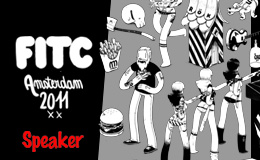Circ - 60 fps gravity based game for iOS, Android and PlayBook
July 11th, 2011
![]() Circ is a nice example of an AIR game that runs very smoothly at 60 fps on most devices including iPhone 4, iPad 1, iPad 2, Galaxy Tab 10.1, HTC Desire HD, BlackBerry PlayBook and so on.
Circ is a nice example of an AIR game that runs very smoothly at 60 fps on most devices including iPhone 4, iPad 1, iPad 2, Galaxy Tab 10.1, HTC Desire HD, BlackBerry PlayBook and so on.
I did a quick performance test on various devices thanks to special builds provided by the authors, check it out:
Official game trailer:
Get the game:
- Circ at Apple App Store
- Circ at Android Market
- Circ at BlackBerry App World
The game was built by several guys in Prague, but mainly Vojtěch Havlíček (lead developer) and Anh Vu Hoang (lead designer). The guys told me that by launching the Circ they wanted to celebrate the recent Atlantis space shuttle launch, so I’ve asked them a couple more questions:
Me: What is Circ?
Vojtěch: Circ is a casual game for mobile platforms. We tried to create a dead simple game,
extremely easy to play, but still exciting.
The simplified main concept of the game is that you (rocket) circle around the planets, that constantly scroll down. By taping the screen, you can leave the planet and land on another. The trajectory of rocket is influenced by ‘force’ interaction of planets on you. You must avoid leaving the game area from top or bottom and score the best.
The whole game can be controled only by a thumb (on reasonably sized devices, of course) so this allows you to explore the game concept deeper and work on mastering the game even on your way to work, or school.
Me: Where does the original idea come from?
Vojtěch: The main idea behind the scene was to create a physical simulation of system of interacting particles just for fun. The simulation itself ended as so good eyecandy that I decided to combine it with game concept of one of my older games.
How did the design of the game evolve?
Vojtěch: At first, the game was very simple - as for the features, we tried to focus mainly on ‘force’ interaction between planets and player, which appeared to make the game very relaxing, without any need for extra bonuses, etc.
However, some of these features were also added later, as the game became more a ‘game’ than just a simulation. The very original ‘swipe-to-save-yourself’ feature has also been added at this stage. We had a bunch of ideas how to improve the feature base, but rather decided to freeze them at that point and have focused on publishing.
Me: Do you use DisplayList (Sprites) or Blitting and which rendering mode?
Vojtěch: We use DisplayList rather then Blitting in this case, rendering on gpu.
Me: How did you solve the challenge of multiple resolutions?
Vojtěch: The game package includes 4 variations of graphics of sprites and more than 10 various scales of background.
The device type is set in the begining and the whole game is created on basis of this. So in fact we have 13 scale and graphics settings for 13 different devices in one. By setting stage.scaleMode to NO_SCALE and stage.stageAlign to TOP_LEFT, we can decide during the runtime, which device settings to choose and rescale the application.
Me: What optimizations have you done to get 60 fps and what do you recommend?
Vojtěch: My advice is to be ecological - recycle and reuse.
I used pooling optimizations together with reference based data structures like linked lists instead of arrays/vectors.
This allowed me to gain from extremely fast splice operations, which are really common in game loop procedure.
It is also very important to avoid unexpected garbage-collecting during the loop phase of the application.
So try to keep the amount of created objects constant during the loop.
Me: Do you have any plans for the future development of the game?
Vojtěch: Yes, we do. As we mainly focused on optimizations for the devices, we intent to improve the gameplay a with a lot of new game features in upcoming update;
Facebook comments:
No Comments »
No comments yet.
RSS feed for comments on this post. / TrackBack URL




